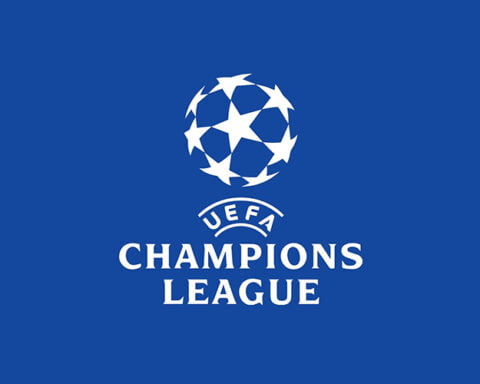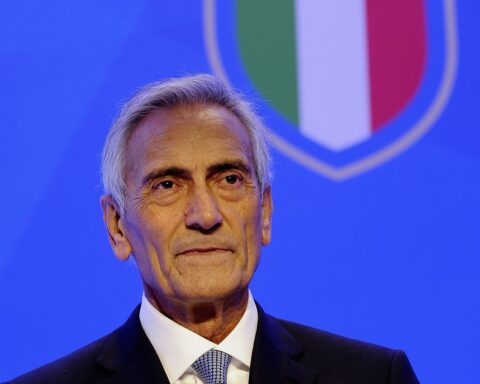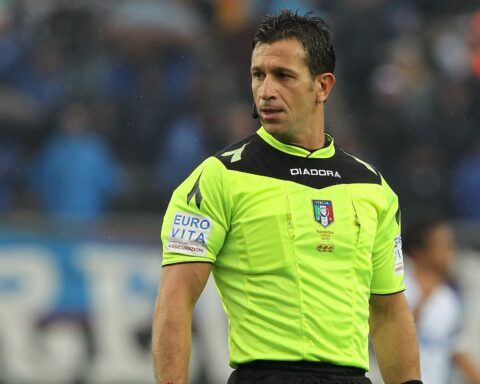According to the 27th edition of the Deloitte Football Money League, the 20 clubs with the highest revenues in world football earned a record €10.5 billion in the 2022/23 season. The list includes four Serie A teams, with Juventus leading the way for the Italian sides, ranking 11th, with AC Milan just behind them in 13th place. Italian football site Calcio E Finanza summed up this years report, outlining the changes in rankings:
This sum, which represents a 14 per cent increase over the previous year, was achieved thanks to the record revenues recorded by Money League clubs at commercial and matchday level of €4.4 billion and €1.9 billion, respectively. Matchday revenues were driven by high demand for live sport from fans, with stadiums opening at full capacity across continental Europe during the 2022/23 season.
Looking at the ranking, in which Deloitte reclassified club revenues net of capital gains, Real Madrid is back on top of the Money League (€831 million in total revenues), followed by Manchester City (€826 million), Paris Saint-Germain (€802 million), Barcelona (€800 million) and Manchester United (€746 million). Commercial revenues represented the largest revenue stream for Money League clubs for the first time since the 2015/16 season, excluding the 2019/20 season due to the impact of Covid 19.
Notably, 17 of the top 20 clubs recorded an increase in commercial revenue compared to the previous year, with growth largely attributable to improved retail sales, revenue from non-pitch events and the recovery of sponsorship revenue that had been impacted by the pandemic.
In contrast, television rights revenues reported by Money League clubs increased by a modest 5%, a growth limited, in part, by the fact that the 2022/23 season falls under existing domestic broadcast agreements. Overall, Money League clubs reported an average turnover of over EUR 500 million, with commercial and television revenues contributing a similar amount, EUR 222 million (42%) and EUR 213 million (40%), respectively, followed by match revenues (EUR 92 million, 18%).
Tim Bridge, partner in Deloitte’s Sports Business Group, said: ‘Another record-breaking year for Money League clubs representing the continued financial strength of the football industry. The high demand for live sport points to further growth in particular in commercial and matchday revenues. As clubs no longer seem to be able to rely on exponential growth in TV rights revenues, the creation of a more commercially focused business model will allow them to gain more control over their financial stability. This may include the development of new merchandising or non-match related events, such as concerts, to create new commercial offers’.
Real Madrid knocked Manchester City off the top spot in the Money League, becoming the club with the highest revenue in 2022/23. Real Madrid is back on top for the first time since 2017/18 with record revenues of €831 million, up €118 million from the previous year. The club’s growth is largely attributable to strong retail performance, increased stadium attendances and a recovery in sponsorship revenue following the easing of pandemic restrictions.
Manchester City drops to second place in the 2024 rankings despite a record 2022/23 season both on and off the field. The club recorded its highest ever revenues for a season, amounting to €826 million, thanks to success in the Champions League and Premier League, which increased commercial and broadcast revenues by €50 million and €26 million respectively.
Paris Saint-Germain, on the other hand, entered the top three for the first time in the history of the Money League with revenues of EUR 802 million. Barcelona, in fourth position (€800 million), is one of the major players in this year’s Money League, rising from seventh place thanks to the club’s record licensing and merchandising revenues and the return of fans to the stadiums. Liverpool (€683 million) experienced the biggest drop in the annual ranking, falling from third to seventh place due to a decline in results on the field in both domestic and European competitions. Liverpool was one of three Money League clubs (along with Atletico Madrid and West Ham) to record a drop in revenue.
While year-on-year changes in the Top Ten were minimal, there were notable changes between positions 11-20. Teams from continental Europe, such as Eintracht Frankfurt, SCC Napoli and Olympique de Marseille, replaced the trio of English clubs Leicester City, Leeds United and Everton, demonstrating the influence of on-field performance on financial revenues. In the 2022/23 season, the number of Premier League clubs in the Money League dropped to eight, after there had been at least 10 in the last two years.
Deloitte 2024 football revenue rankingReal Madrid 831.4 million (713.7 million in 2021/22)
Manchester City 825.9 million (731)
Paris Saint-Germain 801.8 million (654.2)
Barcelona 800.1 million (638.2)
Manchester United 745.8 million (688.6)
Bayern Munich 744 million (653.6)
Liverpool 682.9 million (701.8)
Tottenham 631.5 million (522.9)
Chelsea 589.4 million (568.3)
Arsenal 532.6 million (433.5)
Juventus 432.4 million (400.7)
Borussia Dortmund 420 million (357)
AC Milan 385.3 million (257.4)
Inter 378.9 (308.4)
Atletico Madrid 364.1 million (393.8)
Eintracht Frankfurt 293.5 million (208.3)
Newcastle 287.8 million (212.2)
West Ham 275.1 million (301.3)
Napoli 267.7 million (156.5)
Olympique Marseille 258.4 million (237.5)Deloitte football revenue ranking 2024, the Italians
The main highlights for Italian football are:
Juventus confirms its position as the top Italian club in terms of turnover, remaining in 11th place but increasing its revenues by +8% to €432 million
Milan’s leap forward, moving from position 16 to position 13, touching 385 million in revenues (+50% compared to the 2021/22 season)
Inter is stable at position 14, with an increase of almost 50 million in revenues to around €379 million (+23% compared to the previous season)
Napoli is one of the three new entries in this year’s top 20, with total revenues of over 267 million, up +71%.Bridge added: ‘In the coming seasons, European clubs may seek to further diversify their revenues to gain control over a larger share of their total revenues. This will allow clubs to protect themselves not only from the variability of on-field performance, but also from more difficult macroeconomic conditions and changes in the football system. At a time when clubs face a greater degree of financial regulation, it will be crucial to strike the right balance between securing the best talent on the pitch and sustaining a solid financial base through commercial activities’.





